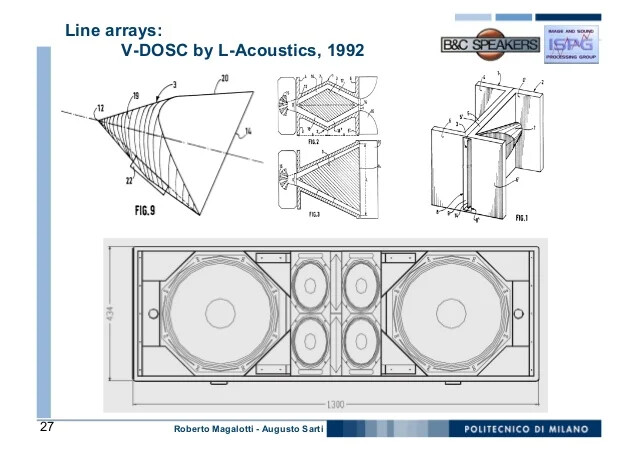couldn’t find the particular page on DiyAudio where i saw it but i can use another driver as example.
Celestion Aperiodic was simply an example of a high-end compression driver using the latest technology.
we can use another high-end compression driver using the latest technology instead, the BMS 4595HE
https://www.bmsspeakers.com/index.php-67.html?id=bms_4595he00
why ? because they actually post distortion measurements in the spec sheet:
this is a coaxial driver and they have two sets of distortion measurements - using an active and a passive crossover. i will post the one using passive crossover as it’s less confusing.
let’s look at 3rd harmonic - it only shows up on the graph at 7 khz and above. but a 3rd harmonic of 7 khz is at 21 khz so inaudible completely …
second harmonic on the graph is significant from 3 khz up, so from 6 khz up in reality since 3 khz is the fundamental … at this point ( 6 khz ) it’s nearly 20 db down on the graph, but the graph itself is raised 10db so it’s actually 30db down from fundamental …
distortion audibility is frequency dependent, but even though it’s more audible in upper midrange and treble i believe the threshold of audibility there is about 1% THD which corresponds to -40 db.
so at -30 db actually the measured distortion for this BMS would be audible …
but notice the measurement level - it is 1 watt or 110 decibel output. by comparison a smoke alarm is bout 90 decibels. so we’re talking 20 decibels louder than a smoke alarm here and a smoke alarm is already unbearably loud.
at a level you actually listen to music at distortion will be far lower and most likely inaudible. and you still maintain basically unlimited headroom for cymbal crashes and so on with 110db / watt efficiency and 1,000 watt peak power handling …
of course at that 1,000 watt peak distortion will likely be around 100% or so but distortion should be inaudible in any realistic home listening scenario …
as i said unfortunately i couldn’t find the measurement that guy did at only 100db where distortion was crazy low for the Aperiodic driver - obviously these are prosound drivers and they don’t typically get tested at such low levels as are used at home …
maybe ask around on DiyAudio for any measurements like that - i am sure there are people there who have done it.
also note you can COMFORTABLY cross this BMS at 1 khz with a large enough horn. this is because at 1 khz and 110 db distortion is 40 db down. so basically you cross it straight to a 15" woofer at 1 khz and you have a state of the art sound system.
B&C has a similar driver and their demo system was an MTM with two 15" woofers.
An ultra high end driver like this is intended for stand alone point source use such as in a cinema application. Rock Concerts will instead use arrays of simpler drivers ( without crossovers ).



